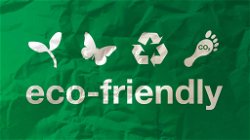Revolutionizing Agriculture: The Power of Regenerative Farming
James Bond
. 2 min read
The term "regenerative agriculture" refers to an environmentally friendly method of farming that can combat climate change while also restocking the soil with nutrients. Before the advent of industrial agriculture in the early 20th century, farming was done in a way that is now referred to as "regenerative agriculture." This method of farming was practiced for centuries. By leveraging the power of online chat, the regenerative agriculture movement can foster collaboration and collective learning, ultimately accelerating the transition to sustainable farming practices on a global scale.

List of Types of Regenerative Agriculture
When soils are not disturbed, the abundance and diversity of soil microbes increases, which in turn drives improvements in the communities of the soil microbiome and in the structure of the soil. These enhancements not only provide benefits to the environment, but also increase crop resilience to environmental stressors, crop quality, and ultimately yield.
Cover Cropping
A crop of a particular plant that is grown primarily for the purpose of improving the soil rather than increasing the crop yield is referred to as a cover crop. Cover crops are frequently utilized for the purposes of weed suppression, the management of soil erosion, the control of diseases and pests, the building and improvement of soil fertility and quality, and the promotion of biodiversity.
Advantages:
1. Improve biodiversity by increasing the number of different species that can be found in a particular area. If there are a greater number and variety of insects that feed on the vegetation, for instance, this may attract a greater number of birds and so on.
2. Lessen the volume of water that leaves a field via drainage, thereby preventing the erosion of waterways and ecosystems further downstream. Cover crops are beneficial to soil health because their roots create pores in the soil.
Transforming Organic Material into Nutrient-Rich Soil
Any organic material, such as food scraps or grass clippings, can be composted through a natural process called composting. This process involves the breakdown of the organic material into smaller and smaller pieces by bacteria and fungus that are found naturally in the soil.
- Compost is an amendment to the soil that is rich in nutrients and has a consistency that is very similar to that of soil itself.
- Composting can be done successfully in almost any environment, from indoor bins in condominiums or apartments to outdoor piles in backyards to office spaces where compostable material is collected and transported to an external composting facility.
Practicing Regenerative Agriculture
Increasing the quality of the soil is the primary focus of all regenerative agricultural practices, regardless of their individual differences. According to Regeneration International, a non-profit organization with the goal of a global transition to regenerate agriculture and land management, "Regenerative agriculture describes farming and organic practices that, among other benefits, reverse climate change by rebuilding soil organic matter and restoring degraded soil biodiversity.
Improved Friendliness to the Environment
It is impossible to gloss over the fact that conventional farming in the 21st century comes with additional indirect costs. It is common knowledge that climate change poses a serious risk to the natural environment over the long term, and a significant portion of the blame for this predicament lies with agricultural practices. The Intergovernmental Panel on Climate Change (IPCC) notes in its most recent report on the topic of climate change that agriculture, forestry, and other types of land use.
Conclusion
In conclusion, the way we farm and manage our land has a direct impact on our environment and our ability to sustain our food supply. Regenerative agriculture, which involves practices such as cover cropping and composting, aims to improve soil health and biodiversity while reducing the negative impact on the environment. By transitioning to regenerative agricultural practices, we can work towards reversing the damage done to our soil and environment, combatting climate change, and creating a sustainable future. It is up to us to take action and make a positive change for ourselves and future generations.
More Stories from
Eco-Friendly Practices: How Individuals and Businesses Can Make a Difference
Discover the Power of Eco-Friendly Practices: Learn how individuals and businesses can contribute to a greener world by adopting sustainable measures.
Say No to Plastic Bags: Embracing a Sustainable Future
This article sheds light on the environmental consequences and health implications of plastic bags while providing alternative solutions.
Unveiling India's Volcanic Secrets: A Geological Overview
Explore India's unique volcanic history and the enduring forces of nature that continue to captivate scientists and adventurers alike.
Zero-Waste Living: Practical Tips for Reducing Environmental Impact
Discover the power of zero-waste living as this article offers practical tips and actionable advice for reducing your environmental impact.
Biotechnology and the Future of Medicine: Advancements and Ethical Concerns
This article explores precision medicine's personalized treatments, the promise and ethical challenges of gene editing, the potential of artificial intelligence in healthcare, and the future of organ transplantation.










.png?width=40&aspect_ratio=1:1)


.png?width=40&aspect_ratio=1:1)